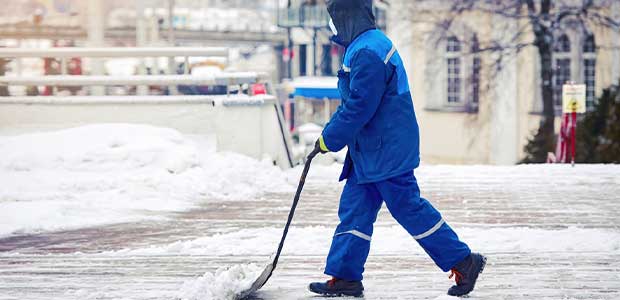
Keeping Employees Safe from Hazards After a Snowstorm
Even tasks as seemingly simple as shoveling snow can pose risks to employees.
- By Alex Saurman
- Nov 25, 2022
With temperatures already dropping in regions of the country, many workers will soon find themselves working in the cold.
Just like the summer, winter weather brings additional hazards that employers and employees need to watch out for, like snow. Luckily, OSHA provides recommendations on how to mitigate these hazards.
A frequent activity many perform after a snowstorm is shoveling. Although shoveling snow seems like a simple task, it’s not. From 1990 to 2006, an average of 11,500 people went to emergency rooms for “snow shovel-related incidents,” according to one study. Besides being exposed to the risks associated with cold temperatures, employees who shovel snow are at risk for “exhaustion, dehydration, back injuries or heart attacks,” OSHA said. OSHA provides recommendations on how to keep employees safe when they must shovel snow:
- Do not start shoveling until you have warmed up your body.
- Do not shovel large amounts of snow. Aim for smaller amounts.
- If you are able to, “push the snow instead of lifting it.”
Working at heights, such as on a roof, always poses risks but even more so if the surface is covered in snow. Employees may be exposed to slippery surfaces and electrical hazards and may not be able to see other hazards on the structure, like a skylight. To protect these employees, ensure that all structures are inspected by a competent person and can hold employees without collapsing, OSHA said. If you can, try to remove the snow without making workers go on the surfaces. Proper equipment use, PPE and training are also essential.
When a winter storm hits, walking surfaces can become slicker, increasing the chance of a slip, trip or fall. To reduce the chances, OSHA recommends making sure all walking surfaces are cleared and using a deicer. Employees can also keep themselves safe by wearing “a pair of insulated and water-resistant boots with good rubber treads.” When walking on slippery surfaces, be sure to take it slow. Shorter steps are recommended.
About the Author
Alex Saurman is a former Content Editor for Occupational Health & Safety,who has since joined OH&S’s client services team. She continues to work closely with OH&S’s editorial team and contributes to the magazine.